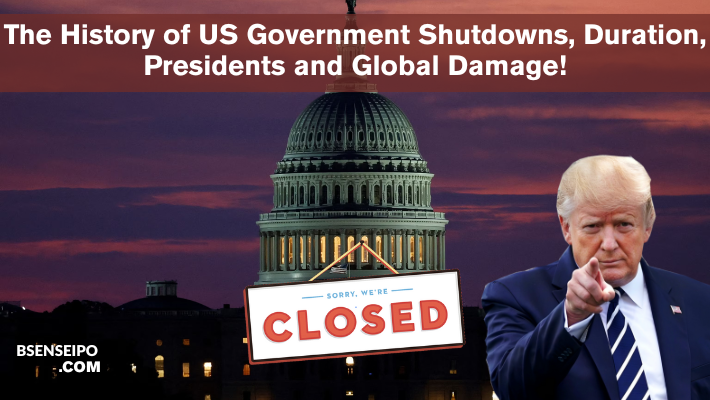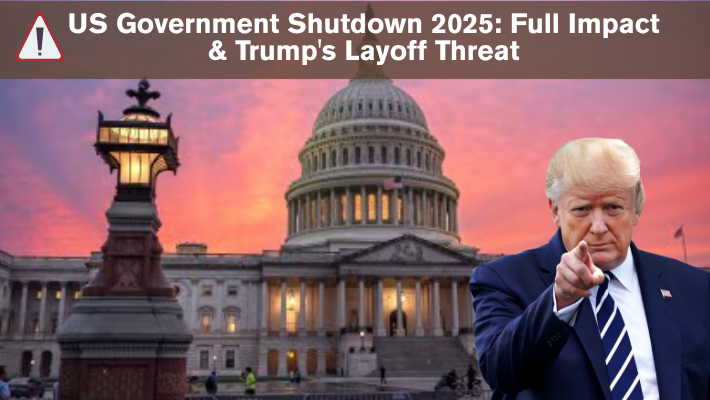US Government Shutdowns: A History of Harm at Home and Abroad
The failure of the U.S. Congress to pass essential funding legislation results in a federal government shutdown, a uniquely American political phenomenon with profound consequences. Since the modern budget process began in 1976 and subsequent legal opinions clarified the required cessation of non-essential functions, these shutdowns have become recurring events.
The following is a breakdown of the most significant and longest shutdowns, the presidents they occurred under, and the far-reaching damage they caused.
A Timeline of the Most Significant US Government Shutdowns
While the U.S. government has experienced over 20 funding gaps since 1976, only a handful have lasted more than a few days and caused widespread disruption.
| Start Date | Duration (Days) | President | Cause of Impasse |
| Dec 1995 – Jan 1996 | 21 Days | Bill Clinton (D) | Conflict with the Republican-led Congress over major spending cuts and balancing the budget. |
| Oct 2013 | 16 Days | Barack Obama (D) | Republicans’ attempts to block implementation and funding for the Affordable Care Act (Obamacare). |
| Dec 2018 – Jan 2019 | 35 Days | Donald Trump (R) | Longest shutdown in US history. Standoff over the President’s demand for $5.7 billion in funding for a border wall. |
| Oct 2025 (Ongoing) | 2+ Days | Donald Trump (R) | Deadlock over Democrats’ demands to extend expiring Affordable Care Act subsidies and reverse Medicaid cuts. |
Read more .. US Government Shutdown 2025: Why It Happened, Full Impact
US Government Shutdowns – Key Takeaways by the President
- Jimmy Carter & Ronald Reagan (1970s-1980s):3 Saw many short funding gaps, often resolved within a weekend, reflecting less impactful, routine budget disagreements.
- Bill Clinton (1995-1996): Experienced two lengthy shutdowns (5 and 21 days), establishing the modern template for using the budget process as a high-leverage political weapon.
- Barack Obama (2013): Faced a 16-day shutdown driven by an ideological battle over his signature healthcare law.
- Donald Trump (2018-2019 & 2025): Presided over the longest shutdown in history (35 days) during his first term and initiated another major closure in his current term, often threatening to use the shutdown to permanently reduce the size of the federal government.
The Damage: Domestic and Global Consequences
The financial and operational damage from a government shutdown goes far beyond the immediate halt of services. It is a costly display of political dysfunction that impacts millions of citizens and erodes global confidence.
Damage to the United States
The primary damage is measured in economic loss and disruption to public welfare:
- Economic Cost and GDP Loss: The Congressional Budget Office (CBO) estimated that the 35-day shutdown in 2018–2019 cost the U.S. economy $11 billion, including $3 billion in lost economic activity that was never recovered. Every subsequent week of a shutdown is estimated to trim 0.1 to 0.2 percentage points from quarterly GDP growth.
- Federal Employees and Finances: Hundreds of thousands of federal employees are furloughed or required to work without pay (e.g., TSA, air traffic controllers, active-duty military). While Congress has traditionally granted retroactive pay, the immediate financial strain on families forces many to miss mortgage payments or line up at food banks.
- Public Health and Safety: Key functions are hampered. Routine FDA inspections of food and medical facilities are often suspended, increasing public health risks. Scientific research at institutions like the NIH is put on hold, delaying critical medical advances.
- Service Disruption: Services that Americans rely on are delayed: passport processing, veterans’ claims, Small Business Administration (SBA) loans, and tax refunds (during tax season shutdowns) are all suspended or significantly slowed.
- National Parks and Tourism: National Parks and museums close or operate with skeleton crews. The 2018-2019 shutdown led to significant vandalism and environmental damage at unstaffed parks, while the U.S. Travel Association estimates a shutdown can cost the travel industry $1 billion per week.
Damage to Other Countries and the Global Economy
Because the U.S. is the world’s largest economy and a critical global actor, its internal chaos has international repercussions:
- Global Market Volatility: A U.S. shutdown signals political instability to the world. Global investors may reassess risk, leading to market volatility, a weakening U.S. dollar, and a decrease in confidence in the stability of U.S. financial assets, which can drag down other economies.
- International Travel and Trade: Visa and passport processing at U.S. embassies and consulates abroad can be significantly delayed, disrupting international students, tourists, and workers. Trade negotiations and the issuance of federal permits for international business often stall entirely.
- Foreign Aid and Diplomacy: Operations for agencies like the U.S. Agency for International Development (USAID) are impacted, leading to disruptions in humanitarian aid, global health, and diplomatic initiatives worldwide. This can damage relationships and create opportunities for rivals to increase their influence.
- Scientific and Security Cooperation: NASA missions and international science collaborations are often delayed. While national defense remains operational, non-essential international security and intelligence sharing can be hampered, affecting global readiness.
The current political environment, with threats of permanent layoffs in federal agencies, suggests that this latest shutdown may inflict longer-lasting, non-recoverable institutional damage than any before it.




